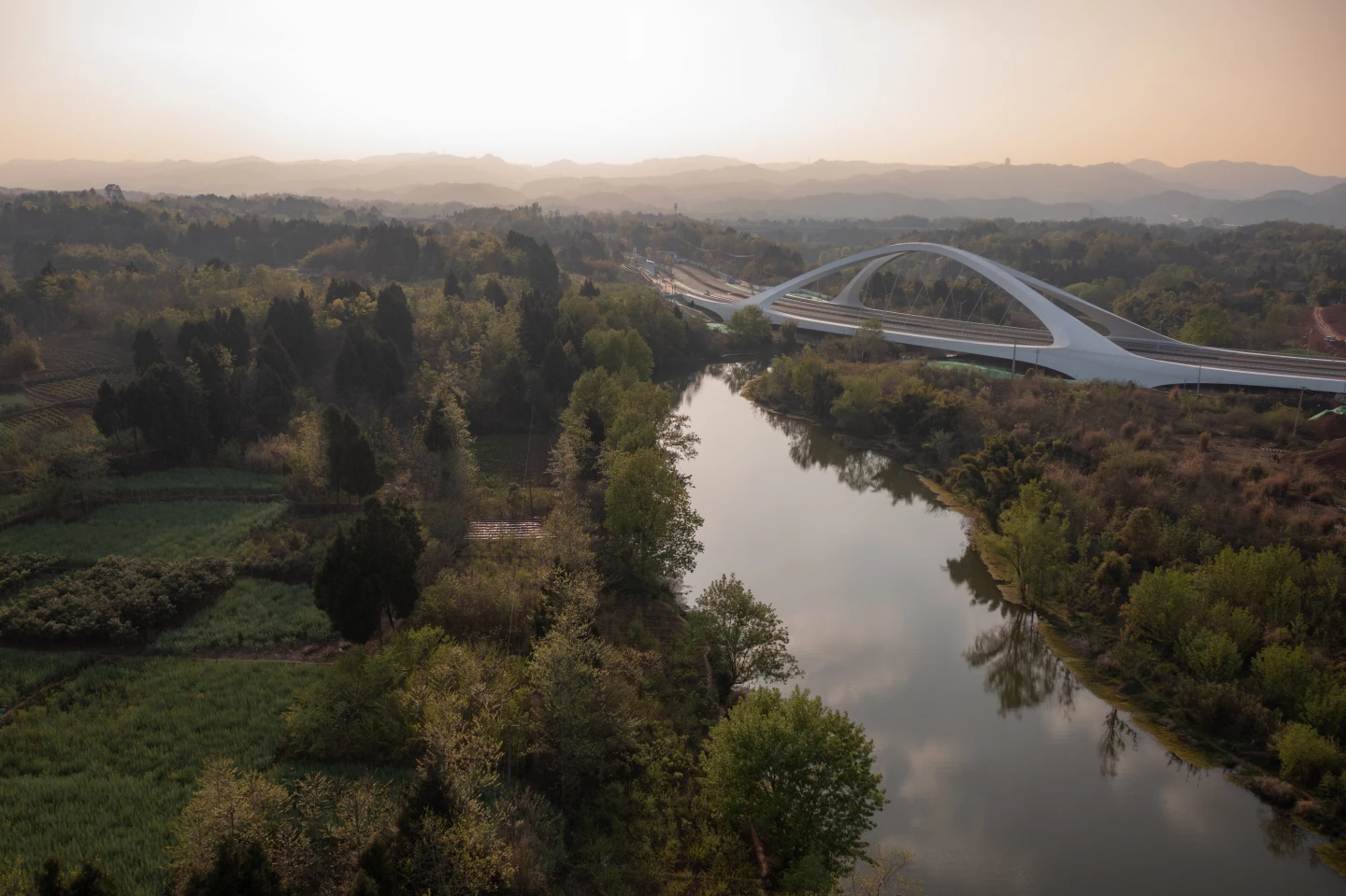Following projects like the Daxia Tower and Wuhan Taikang Financial Centre, Zaha Hadid Architects (ZHA) continues its recent focus on China with an attractive new bridge. Named the Chengdu West First Bridge, the crossing showcases the firm's trademark style with an elegant curving form that's designed to stand up to extreme weather.
The Chengdu West First Bridge has a length of 295 m (967 ft) and allows pedestrians, cyclists and cars to cross the Jiangxi River. It's part of a larger ring road and cycle route in Chengdu.
The bridge curves gently to one side as it passes over the river and is defined by two large white steel supporting arches that protrude from either side of the road deck. As they rise to a maximum height of 30 m (almost 100 ft), the arches lean into each other and touch, helping stabilize the structure from lateral winds. Indeed, ensuring it would withstand severe weather was a key focus of the project – though you'd hope that's the case with any bridge, it's of particular concern in China at the moment following several climate change-related disasters.
"Zaha Hadid Architects used structural analysis software on the design's digital model," explained ZHA. "Examining all material self-weight, superimposed dead load and traffic live loading, as well as environmental considerations of wind and temperature, this analysis ensured the structure and foundations have been designed to exceed the standards required for once-in-200-year weather events."

The Chengdu West First Bridge was commissioned in 2019 following an architecture competition and was constructed using locally manufactured prefabricated steel sections, which were welded together in situ and raised into position using mobile cranes. Piles and abutments were constructed from reinforced concrete and there are no foundations positioned in the river itself.
The project is one of several bridges designed by ZHA to date, including the asymmetrical Danjiang Bridge and its experimental unreinforced 3D-printed concrete bridge.
Source: ZHA









